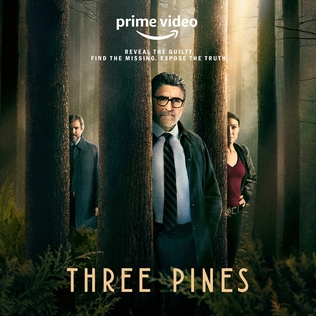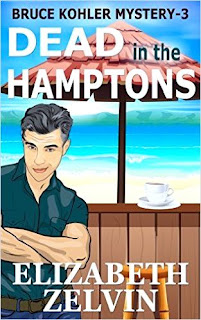If you're reading this blog, you most likely love to read crime fiction. Maybe you also write it. With that in mind, and because we're in the midst of the holiday season (and because I'm swamped with work), I'm pulling this goodie out of the archives with some updates. I cordially present (cue the trumpets) ...
GIFTS FOR READERS AND WRITERS
First we'll start with gifts for readers
You think this is a book bag, right? It is, but it's so much more.
We'll start with its function as a bag. Every reader needs a book bag. Something to take with her to the library or when she's out and about. It shouldn't be too small because she might finish the book she's reading and need another one. She shouldn't be caught without options. So she'll need to carry several books with her wherever she goes. So make that bag sturdy.
But sturdiness is only one important quality of the bag. It should say something. Does your reader love sci fi? Make sure your bag shows it. Or does your reader coo at cozy mysteries? Let the bag share that with the world. Or, if your reader has eclectic taste, you can simply use the bag to proclaim that its owner loves books. But the bag should make a statement because a book bag can do more than carry books. A book bag can help readers find each other. So keep that in mind when shopping. With a book bag, you're not just giving a tote, you're giving a love beacon--a signal someone can send to the world that she is a reader. And maybe, just maybe, another reader will see the beacon and respond. What better thing to bond over than books?
Book Light
You might have bought a book light decades ago and realized they weren't
made well. You might have even had a store clerk at a Waldenbooks
discourage you from buying a book light back in the eighties because of
their poor quality. (Nope. That wasn't me. No, siree.) But today's book
lights have come of age. Not only do they work well, but they're
lightweight and pretty. Oh so pretty. Doesn't the reader on your list
deserve a sturdy way to read in bed without the lamp on. (And to that
point, doesn't the reader's mate deserve a way for the reader to read in
bed without the lamp on?) So buy a book light. It's a gift for two, all
in one.
Bookends
Go for the Gold
Book bags, book lights, and bookends are nice, you're thinking, but you want to
show the reader in your life just how much you love her. Isn't there
something nicer (read: pricier) you can buy? But of course. First,
there's an e-reader. Yes, most people who would like a e-reader already
have them, but I'd be remiss without mentioning them. When wrists get
weak, e-readers can be easier to hold than books. And when eyes get
tired, e-readers let you increase the type size, which can be nice too.
And if you want a book and have an e-reader, you can click and have that
book at your disposal in mere seconds, which is a pretty nifty thing
indeed.
But, Barb, you're saying. I don't want to give an e-reader. I want to
truly show the love of my life that I get her, right down to her
introverted little toes. What can I buy that will show her I understand
her completely? (Besides, of course, a vacation for her alone with her
books.)
Well, okay. Get out your wallet. Besides a gift card for books, the best
thing you can buy a reader is a ... bookshelf. Or two. Or two dozen.
More and more and more. There are small bookshelves to go into niches in
your bedroom. There are large bookshelves to cover walls in your study.
And then, there's the granddaddy gift of them all:
Built-ins.
Nothing says love like a built-in bookshelf. Be still my page-turning heart. (But Barb, it's too late to order built-ins. We're in the middle of Hanukkah. Christmas is in five days. To that I say, it's never to early to start planning for next year. Get to it!)
The Anti-Welcome Mat
We all know the standard ways people indicate they don't want others
knocking on their doors. The Beware Dog sign. The doormat beseeching you
to Go Away. The sock on the handle of a dorm room door, indicating that
... well, you know.
Writers need something like this too. All too often, a person toiling at
home (especially someone who spends his days making up conversations
for imaginary people) is viewed as interruptible.
"Mom, where are the cookies?"
"Have you checked the jar?" Grumble, grumble.
"Dad, I'm bored."
"Then play with the dog." Even more grumbling.
"Honey, the house is on fire."
"I swear, if I get interrupted one more time I--oh, wait. That's an interruption I'm okay with."
Let's hope that house fires are few and far between. For those other times, your writer needs a way to nicely tell the member of his family to Go Away. So here we have it, a simple sign the writer can hang on his office door. Interrupt thereafter at your peril.
Page Holder
Until you've tried to type in edits, hunching forward to look down at a page on your desk then looking back up to your screen, then hunching forward again to find your place, then straightening up to type the next edits in before hunching once more, over and over and over, you haven't typed in edits first done on paper. Yes, some authors might do all their editing on the computer, but many people edit and proofread the old-fashioned way. That's where a Page Holder comes in. It allows you to have your pages standing upright, so you can sit in the same position, with your eyes on the pages and your fingers on the keys, typing away. And when you need to look to the screen, it's so much easier moments later to simply scan to the left to find your place again on the paper page. This may seem like something silly or unnecessary, but oh my goodness, the writer in your life may need it.
An editor
Every writer needs an editor. You never know when you might be telling
too much instead of showing, or writing stilted dialogue, or not
recognizing a plot hole so big Big Foot could fit through it. That's why
it's always good to get a second pair of eyes, especially someone who
specializes in this type of work.
Some authors rely on critique groups, and they can be great. But
sometimes an author needs a professional. A freelance editor. This can
be especially true for authors trying to sell a first manuscript and
authors planning to self-publish. But freelance editors can be pricey,
so if you love an author, perhaps the best present you can give is the
gift of an editor's time.
So, do you have a great gift you can recommend for the reader or writer
in your life? Please share in the comments. And happy holidays!







































